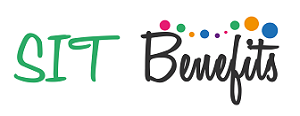In today’s evolving senior living landscape, aligning housing operations with the needs of residents is more than just a priority—it’s a necessity. As expectations shift and demand grows for personalized, responsive care, providers are increasingly turning to senior housing management software to bridge the gap between operational efficiency and resident satisfaction. The right technology can create a seamless connection between departments, staff, and residents, promoting better outcomes across the board.
Modern senior living facilities operate in complex environments. From coordinating care plans to maintaining building maintenance schedules and tracking regulatory compliance, the administrative load is considerable. Traditional methods, such as paper-based records or isolated digital tools, no longer suffice in meeting today’s operational demands. This is where centralized management software becomes a game-changer. It integrates a facility’s operations into a single platform, offering real-time visibility and streamlined workflows.
One of the most impactful benefits of such software is its ability to support personalized resident care. Staff can access detailed resident profiles at a glance—from health histories and dietary preferences to family communications and activity participation. This centralized information allows caregivers to make informed decisions quickly and provide services that are more closely aligned with each resident’s individual needs. With faster access to accurate information, response times improve, and residents experience more attentive, consistent care.
Maintenance and housekeeping teams also benefit significantly. Through automated task tracking and digital work orders, response to maintenance issues is faster and more organized. This prevents disruptions to resident comfort and ensures that safety standards are upheld at all times. As a result, operational efficiency increases while residents enjoy a better quality of life in a well-maintained environment.
Another critical area improved by modern software is communication. Whether it’s between staff members, or between the facility and residents’ families, communication channels become more transparent and immediate. Automated alerts and messaging systems keep everyone informed, reducing the chances of miscommunication and building greater trust. Families appreciate updates and the ability to engage with staff in real-time, which enhances their peace of mind.
Occupancy management is also made more efficient. Real-time dashboards can help administrators monitor room availability, manage move-ins and move-outs with ease, and forecast future needs more accurately. This level of insight not only supports revenue growth but also ensures that resident transitions are handled with the care and attention they deserve.
Furthermore, regulatory compliance—often a burden for senior living facilities—is made simpler. Centralized documentation and automated alerts for audits, staff certifications, and health protocols mean less time spent chasing paperwork and more time focused on care delivery.
Ultimately, integrating innovative management software is not just about adopting technology—it’s about fostering a culture of connection, responsiveness, and care. When housing operations and resident needs are in sync, senior living communities become not just places to live, but places where residents thrive. The future of senior housing is rooted in this seamless integration, and those who invest in the right systems today are positioning themselves to meet the growing expectations of tomorrow’s residents.




